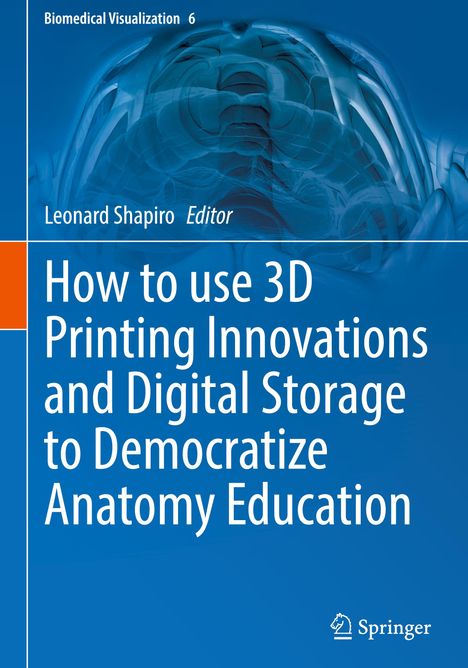How to use 3D Printing Innovations and Digital Storage to Democratize Anatomy Education, Gebunden
How to use 3D Printing Innovations and Digital Storage to Democratize Anatomy Education
(soweit verfügbar beim Lieferanten)
- Herausgeber:
- Leonard Shapiro
- Verlag:
- Springer International Publishing, 11/2024
- Einband:
- Gebunden, HC runder Rücken kaschiert
- Sprache:
- Englisch
- ISBN-13:
- 9783031685002
- Artikelnummer:
- 12086525
- Umfang:
- 260 Seiten
- Gewicht:
- 751 g
- Maße:
- 260 x 183 mm
- Stärke:
- 19 mm
- Erscheinungstermin:
- 6.11.2024
- Hinweis
-
Achtung: Artikel ist nicht in deutscher Sprache!
Klappentext
This edited book contains chapters that describe bespoke three-dimensional (3D) printing aimed at democratizing anatomy education by providing open-source scans for download and printing as 3D models. The long history of anatomical models as educational resources is explored in fascinating detail, from wax models through to a range of cutting-edge 3D printers. In a related chapter, a veterinary anatomy educator describes a transformation in teaching and learning methods in veterinary education using Augmented Reality (AR), Virtual Reality (VR) and 3D visualization methods like CT or MRI images which can be used to reconstruct complete 3D virtual models, as well as 3D prints from these reconstructed scans.
The first digital, cloud-based human skeletal repository in southern Africa is an extensive and categorized ¿bone library¿ globally accessible for use in education and research. A chapter details a digital protocol for the bioprinting of a 3D acellular dermal scaffold (ADS) for use in wound healing, as an alternative to skin grafting for secondary intention wound healing. A chapter offers an extensive guide to applied anatomy for acupuncture and is provided in 4 parts viz, upper limb, lower limb, trunk, head and neck. Each part of the chapter is replete with beautiful cadaveric images including annotations that relate specifically to information in the text. We look at vertebral artery variations and its role in clinical conditions, current insights into polycystic ovarian syndrome, and visual interpretation using multiplex immunoassay of serum samples.
This book will appeal to educators of both human and animal anatomy who have a keen interest and focus on the use of bespoke 3D printing, augmented and virtual reality, as well as acupuncture practitioners, clinicians, regenerative medicine specialists, surgeons, tissue engineers and artists.

